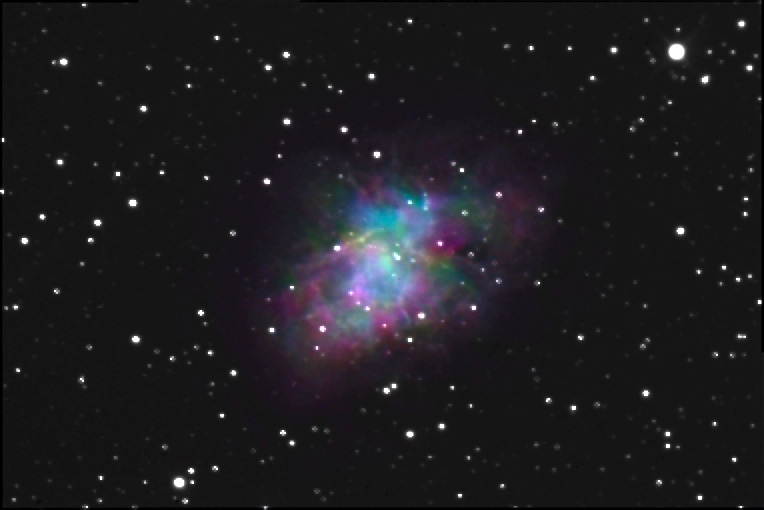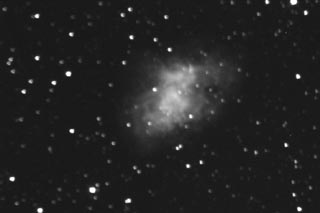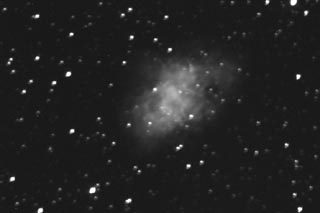|
There are two objects in the sky that exceed all others in their output of polarized light. The Egg Nebula in Cygnus is 12 percent polarized, and the central blue part of the Crab Nebula which is near 20 percent polarized. By inserting a piece of the neutral Polaroid material in three different orientations in the optical path, three different images of the crabs synchrontron radiation can be mapped out at 120 degrees of polarization vectors. these three images can be seen below separately. Now if we combine these images as an RGB color image, a color map of the polarization results. That is the above image you see full size here. Since the stars and sky background are not polarized, they record as neutral, with no color. To make this test image, I used a standard plastic polarizer for a 50mm camera lens inserted on the back of the 2 inch focuser. Between frames the filter was rotated about 120 degrees and the next shot taken. The quality of the polarizer is very bad. This badly distorted the star images, and made them appear bloated and misshaped. A more expensive glass filter would have worked out better. Since the red filaments are not polarized and tended to mask the details, the L channel was comprised of only the G and B data.
Instrument: 12.5" f/5 Home made Newtonian Platform: Astrophysics 1200 QMD CCD Camera: SBIG ST7E w/Enhanced Cooling Exposure: B+G(RxGyBz) = 40:20:20:20 Filters: RGB Tricolor Location: Payson, Arizona Elevation: 5150 ft. Sky: Seeing FMHW = 2.3 arcsec, Transparency 6/10 Outside Temperature: 5 C CCD Temperature: -25 C Processing: Maxim DL, Photoshop, AIP4WIN, PW Pro.
|
|||||
|
|
|||||
|
FastCounter by bCentral |



